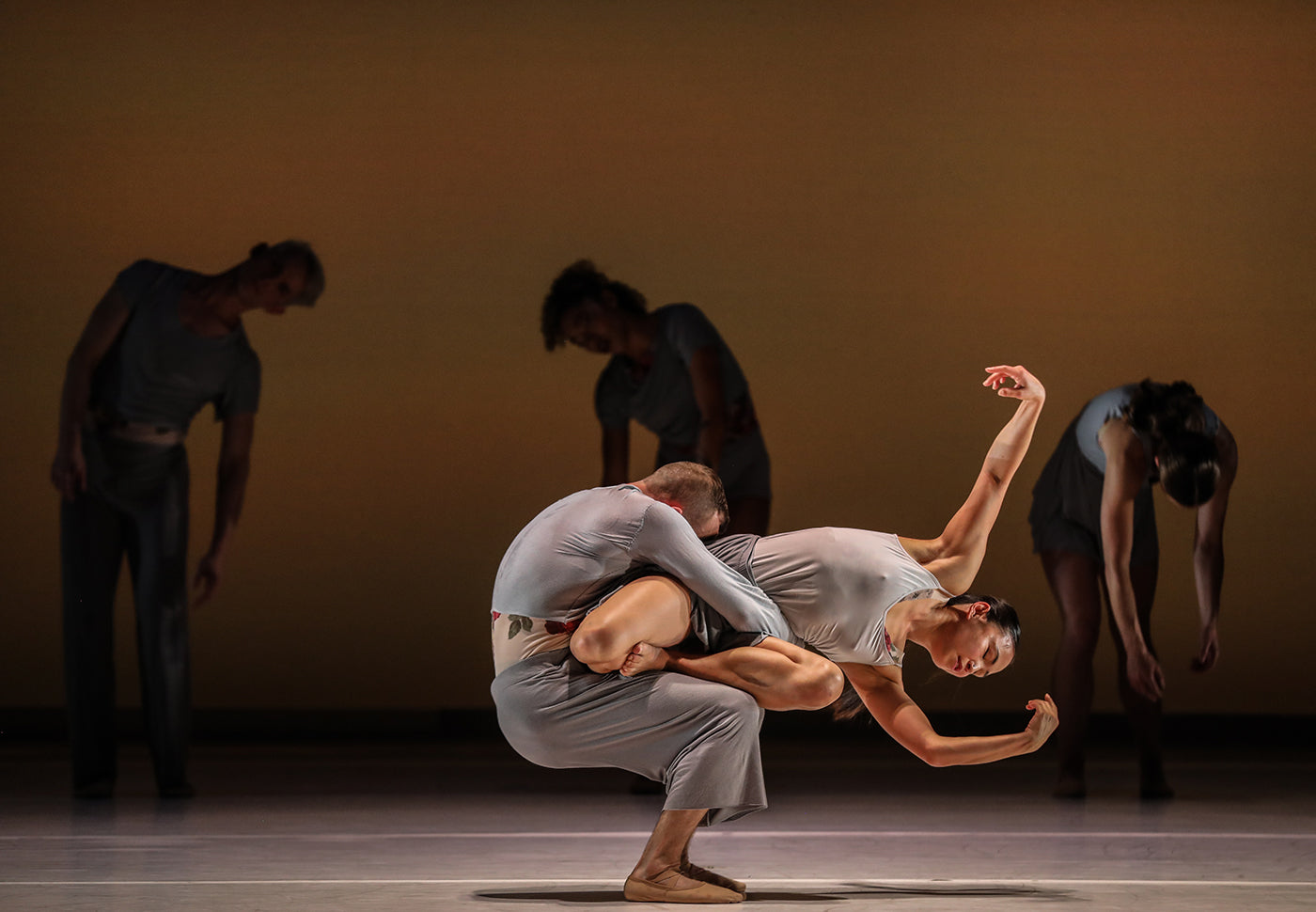The work’s title is a German term for “the state of having been met, stopped, struck or perplexed in the face of a particular event”—an allusion to Young’s emotional paralysis following the tragic death of his daughter, niece and nephew during a family holiday in 2009. Rather than retell this specific event, however, the two-hour work charts the unnamed trauma of an unnamed man, quite literally dancing around “the accident” and focusing instead on the anguish that lingers in its aftermath. It’s a poignant portrait of grief, evoking the universality of human suffering while also resounding as a deeply personal reckoning, with Young himself taking on the central role.
Sequestered in a stark industrial room—a desolate setting with harsh lighting and slithering python-sized cables—our protagonist navigates a nightmarish spiral of ugly memories and desperate swipes at relief, namely via drugs. His agony is finely rendered, as is the mental chaos it prompts: vocal recordings of Young jostle against his spoken responses, and herein emerge some conflicting urges—should he confront the details of the accident head-on? Raze his consciousness with opioids? Repress the memory and move on?
This running dialogue manifests in a various imaginative forms: there’s an AA-style conversation, Young’s disembodied voice attempting to convince his physical self that “using doesn’t replace them,” and later a euphoric double-act, with Jermaine Spivey chiming in as Young’s shimmying, devil-don’t-care half. Spivey is one of five dancers, all part of Pite’s Vancouver-based troupe, Kidd Pivot, who appear alongside Young—a motley chorus to illuminate his despair. In one group sequence, they crop up as factions of his mind, huddling together like emergency responders and arguing over whether he can be saved. Like so much of the choreography in the work, the dancing here is physical, fluid, expressive and inventive: rocking and swerving, swinging and grasping.
Spivey proves particularly deft at harnessing Pite’s penchant for distortion, serving up liquid manoeuvring and pliant pivots that awaken contracted marionette-like moves. David Raymond too is a treat, a sinister, hunched tangle of shuffles and stomps. And then there’s Tiffany Tregarthen, the most mesmerising of all, with her slinky limbs and terrifying bald cap/rictus grin combo, costuming that recalls the eerie Gentleman of the Buffyverse. Scurrying, scuttling, prowling, her mouth wrenched wide open—the grotesquery is irresistible.
The work’s first half rollercoasters through Young’s highs and lows—bursts of carnival dancers representing ‘epiphanies,’ manic, jittery talk show gags, a reality check in the form of a distressing phone call—and concludes with a roiling dark sheet swallowing up Young and his inner voices. There are references to PTSD and the recuperative effects of therapy, plus some symbolic stage tricks along the way: projections of shadows magnifying Young’s demons, blackouts lifted to reveal startling tableaux.
The show’s interval punctures the high-throttle build-up of the first act, and in comes a more dance-focused second half that almost feels like its own discrete work. A single beam in the middle of the stage replaces the theatrical set, and the cast, Young included, performs sprawling, thunderous phrases against a rumbling soundtrack. The choreography is high-energy and agitated, full of swings and falls and gasping reaches, but an undercurrent of calm peeps through, as if the dance itself is a form of therapy, eking out anxieties and easing distress. A duet between Tregarthen and Cindy Salgado channels resistance and cooperation, while an uplifting solo from Spivey, with skips and open arms, hints at a brighter future.
There are no easy answers or happy endings here—the temptation of addiction lingers, as does an understanding that coping means abandoning a certain grasp on those being mourned—but for the first time recovery appears possible. “The accident is in the past,” Young reminds himself. It’s tragedy that drives this work but hope that sustains it—the clear-eyed hope of someone clinging to a cliff face and refusing to let go.









comments